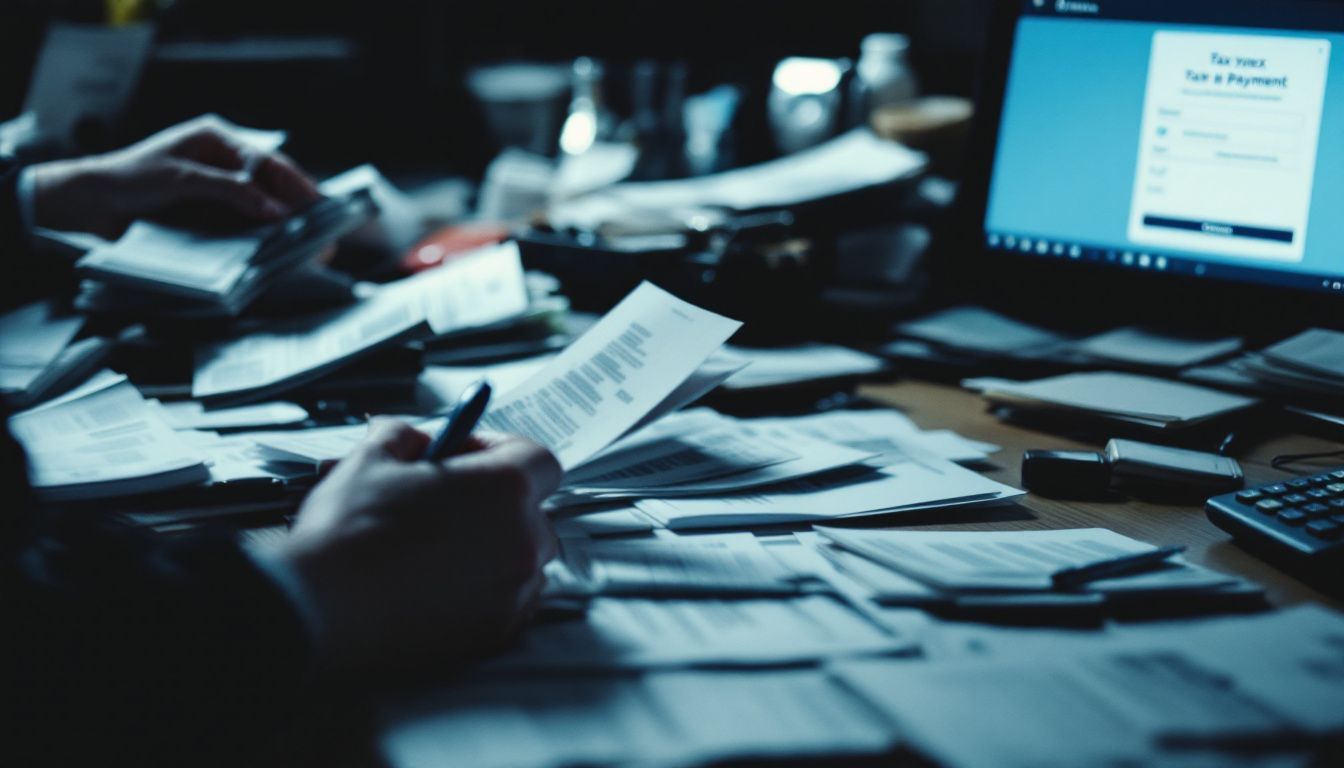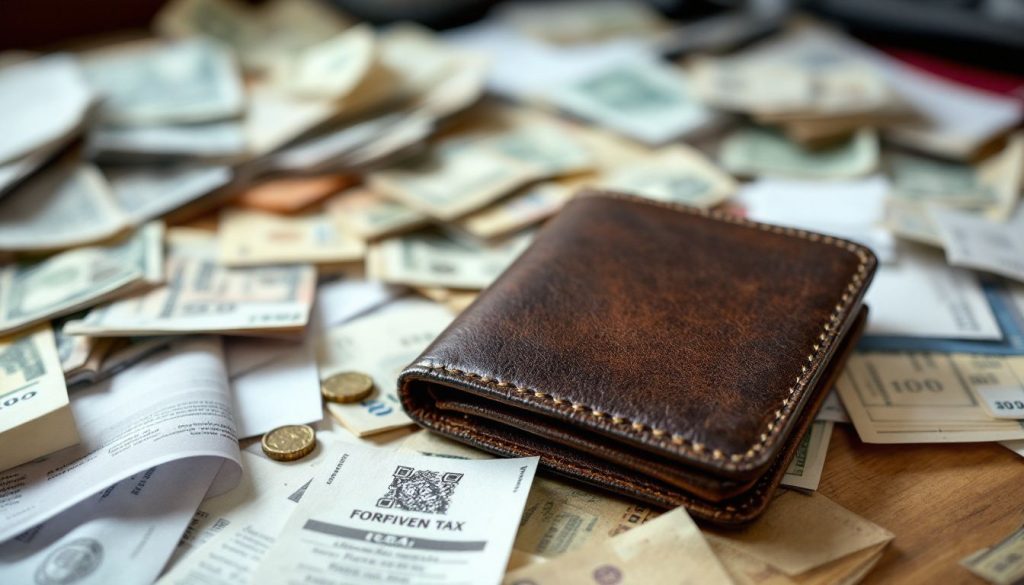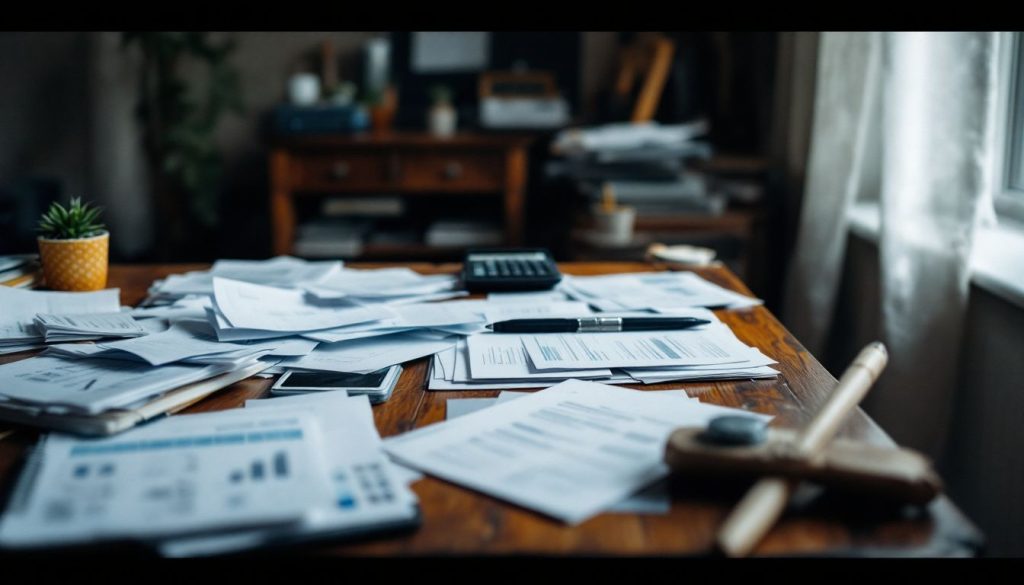Owing money to the CRA can be stressful. One important fact is that you can set up a payment arrangement with the CRA. Our blog will show ways to manage your CRA outstanding debt through options and arrangements.
Keep reading to learn how.
Key Takeaways
- You can set up a payment plan with the CRA to manage your debt in smaller parts over time.
- If you owe money because of COVID-19 benefits or other reasons, paying on time helps avoid extra costs like interest and penalties.
- Keep track of your budget to decide how much you can pay back each month. Use online tools from the CRA for help.
- Talk to the CRA if you need to change your payment arrangement based on your current ability to pay.
- Protecting your assets is important when owing money to the CRA. Work out a plan that keeps most of your belongings safe while paying off debt.
Understanding Your CRA Debt
Understanding Your CRA Debt involves knowing what types of debt the CRA collects. It also includes when they add interest and penalties to your unpaid balances.
Types of debt collected by the CRA
The Canada Revenue Agency (CRA) collects several types of debt. This includes unpaid taxes, tax credits, and benefits that were overpaid. If you owe money to the CRA, they may add interest and penalties for late payments.
COVID-19 benefits can also lead to debts if not handled correctly.
You have options for managing your CRA outstanding debt. You can set up a payment arrangement if you cannot pay in full or on time. Payment options include making full or partial payments online, by mail, or in person.
These arrangements help ease the burden of paying off tax liabilities over time while keeping track of interest charges.
When we apply interest and penalties
Interest and penalties apply to your CRA debt if you do not pay on time. If you miss a payment or pay less than what is due, the CRA adds interest to the total amount owed. This makes your debt grow larger over time.
Penalties also come into play for late payments. They can add more costs, which means you will owe even more money.
You have options to reduce these extra costs. For example, paying your tax debts on time helps avoid interest and penalties altogether. If you are struggling with repayments, call the CRA at 1-888-863-8657 for help.
They can guide you through repayment options and how to set up a payment arrangement with them for easier tax debt management in Canada.
COVID-19 benefits and subsidies
COVID-19 benefits and subsidies helped many Canadians during tough times. The Canada Revenue Agency (CRA) provided financial support to those affected by the pandemic. This aid included different payments that some people may need to repay later.
If you received these benefits, it’s important to understand how they affect your CRA outstanding debt.
Knowing about these payments can help you manage your tax debts in Canada. Unpaid amounts may come with interest and penalties if not addressed. Contacting the CRA can provide options for repayment or determining any outstanding balance related to COVID-19 support.
Payment Arrangements with the CRA
You can set up a payment plan with the CRA if you owe money. This helps you pay your debt in smaller amounts over time.
Setting up a payment plan
Setting up a payment plan with the CRA can ease your stress. It allows you to pay off your tax debt over time.
- Start by logging into your online CRA account. You can use a pre-authorized debit (PAD) agreement for this. This option lets you schedule regular payments.
- Calculate an amount you can afford to pay each month. Think about your monthly budget and expenses. Choose a number that will not cause strain on your finances.
- If needed, call the CRA’s debt management call center at 1-888-863-8657. An agent can help answer questions and guide you through setting up your payment arrangement.
- Payments can be made in different ways. You may choose to pay online, by mail, or in person at a local CRA office.
- Clear communication is crucial if circumstances change. If you cannot keep up with payments, contact the CRA as soon as possible. They can help make changes to your arrangement.
Establishing a payment plan is a good way to handle outstanding debts with the CRA. Next, let’s explore what happens if you can’t pay your CRA debt.
Calculating an affordable amount
After setting up a payment plan, you need to figure out how much you can pay. This is key to managing your CRA outstanding debt.
- Assess your income. Look at your total monthly earnings. This includes your salary and any other money you receive.
- List your expenses. Write down all monthly costs. Include rent, utilities, groceries, and other necessary bills.
- Calculate disposable income. Subtract your total expenses from your income. The money left over can help you decide how much to pay to the CRA.
- Start with small payments. It’s okay to make a lower payment at first if it fits into your budget. Even small amounts add up over time.
- Use the CRA online tools for help. You can find calculators on their website that assist in determining what you owe and how much you can pay.
- Consider making a full or partial payment now if possible. You can pay online, by mail, or in person before due dates for amounts owed.
- Monitor your situation regularly. Keep checking your budget and adjust as needed based on changes in income or expenses.
- Talk to an agent at the CRA if unsure about amounts or arrangements. Call 1-888-863-8657 for assistance from their debt management call centre.
- Explore options for reducing interest and penalties while calculating payments too! Making timely payments helps lessen these extra costs over time.
- Stay focused on meeting your obligations with the CRA while keeping essentials funded each month through careful planning of affordable amounts.
Changing your payment arrangement
You can change your payment arrangement with the CRA if your financial situation changes. It is important to keep the CRA informed about your ability to pay.
- Contact the CRA: Call the CRA’s debt management call center at 1-888-863-8657. Speak to an agent who can help you adjust your plan.
- Provide Your New Details: Let them know why you need to change your payment amount. Share any new income or expenses that affect your budget.
- Calculate a New Payment Amount: Work out how much you can afford to pay each month. Make sure this amount covers both principal and interest on your outstanding tax liabilities.
- Agree on a New Plan: Once you agree on a new amount, the CRA will update your payment arrangement in their system.
- Set Up Pre-Authorized Debit (PAD): Use a PAD agreement for automatic payments from your bank account. This helps you stay on track with the new arrangements.
- Stay Informed About Due Dates: Pay close attention to when payments are due under your updated plan. Missing payments can lead to more penalties and interest.
- Request Clearance Certificates: If you pay off your debt, ask for a clearance certificate from the CRA. This document shows that you no longer owe any taxes.
- Prepare for Future Changes: If circumstances change again, repeat this process as needed. Keeping open communication with the CRA is key in managing tax debts effectively.
- Check for Other Support Options: Explore options like debt forgiveness or government assistance programs if necessary. This may provide relief if you still struggle after changing arrangements.
Clearance certificates
Changing your payment arrangement can lead to the option of obtaining a clearance certificate. A clearance certificate shows that you have paid all your tax debts to the CRA. This document is important if you plan to sell property or need proof of tax compliance.
To receive this certificate, make sure all payments are complete, including interest and penalties. If there are no outstanding amounts owed, the CRA will issue it. Understanding how CRA debt management works can help you avoid issues in the future as well.
Garnishing income and accounts
Garnishing income and accounts is a way the CRA collects debts. If you owe money, they may take funds directly from your paycheck or bank account. This means your employer will send part of your pay to the CRA until your debt is settled.
The CRA has policies for this process. It can be stressful if you cannot pay your tax debt right away. Contacting their debt management call center at 1-888-863-8657 can help you find solutions.
There are options for negotiating payment arrangements so that garnishment does not happen immediately.
What Happens If You Can’t Pay Your CRA Debt?
If you can’t pay your CRA debt, penalties and interest will grow. You may face options for repayment that can help protect your assets.
Penalties and interest
Penalties and interest can add to your CRA outstanding debt. The Canada Revenue Agency (CRA) charges these fees when you do not pay your taxes on time. This means you owe more than just the original amount.
It’s important to manage tax debts in Canada because they can grow quickly due to these extra costs.
You can take action if you’re facing penalties and interest. Options are available for reducing them or finding ways to resolve your outstanding debt. Seeking help from the CRA’s debt management call center is a good move if you need guidance on repayment options or setting up a payment arrangement with the CRA.
Next, we will explore what happens if you can’t pay your CRA debt.
Repayment options
If you owe money to the CRA, there are options to help you pay your debt. These options can ease the stress of owing money.
- Payment Plans: You can set up a payment plan with the CRA. This lets you make smaller payments over time until your entire debt is paid off, including any interest.
- Pre-Authorized Debit (PAD): If you cannot pay all at once, schedule payments using a PAD agreement. This allows automatic withdrawals from your bank account until your debt is cleared.
- Partial Payments: You have the choice to make partial payments online, by mail, or in person to the CRA. Even small amounts are better than not paying anything at all.
- Change Your Arrangement: If your financial situation changes, it’s possible to change your payment arrangement. Contact the CRA to discuss new terms that suit your current needs.
- Clearing Certificates: Once you have paid your debt in full, request a clearance certificate from the CRA. This shows that you owe no money and can be helpful for future tax matters.
- Garnishment of Income: Be aware that if debts go unpaid, CRA may garnish wages or freeze accounts. They can take money directly from your paycheck or bank account to clear your debt.
- Interest and Penalties: Late payments can lead to added costs through penalties and interest charges on top of what you owe. Staying engaged with the CRA helps minimize these extra fees.
- Debt Forgiveness Options: If you’re struggling financially, explore options for debt forgiveness with the CRA. They may consider reducing some of what you owe based on your situation.
- Contacting the CRA: For help with managing tax debts in Canada, call their debt management center at 1-888-863-8657 for assistance on making arrangements suitable for you.
- Document Your Payments: Keep records of all payments made to the CRA as proof of what you’ve paid towards your outstanding balance.
Use these repayment options wisely to manage and resolve your outstanding debt with the CRA effectively.
Protecting your assets
If you owe money to the CRA, protecting your assets is crucial. The CRA can take action if debts are unpaid. They may garnish your income or take funds from your bank accounts. This means they can reduce what you earn each month and take what is in your account.
You have options to safeguard your belongings. You can work with the CRA on payment plans that fit your budget. These arrangements allow you to make smaller payments over time while keeping most of your assets safe.
Explore tax debt relief options and negotiate terms that help protect what matters to you.
Conclusion
Managing your CRA debt can feel overwhelming. Many options are available to help you pay what you owe. You can set up a payment plan that works for your budget. Don’t ignore the debt; reach out to the CRA for support.
Taking action now can lighten your financial stress and keep you on track.
FAQs
1. What are my options for managing CRA outstanding debt?
Options include making payments to the CRA, setting up payment plans, negotiating tax debt or seeking government debt assistance.
2. How can I calculate my CRA outstanding debt?
You can use a calculator tool provided by the Revenue Canada to tally your total tax debts.
3. Are there consequences if I owe money to the CRA?
Yes, owing money to the CRA could lead to garnishment of income and accounts, along with interest and penalties on late payments.
4. Can I get a refund for my CRA outstanding debt?
In some cases, you may be eligible for a tax refund depending on your situation and how much you’ve paid towards your outstanding balance.
5. Where can I find contact information for dealing with CRA debts?
Contact information for dealing with collections and recovery related to Revenue Canada’s debts is available online.








